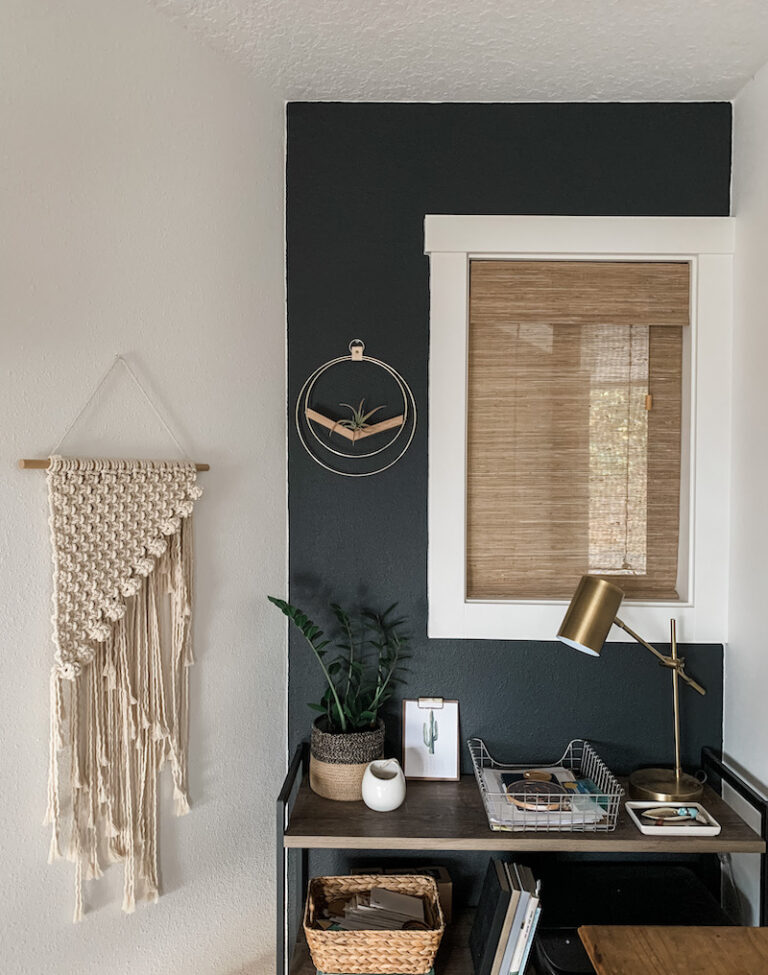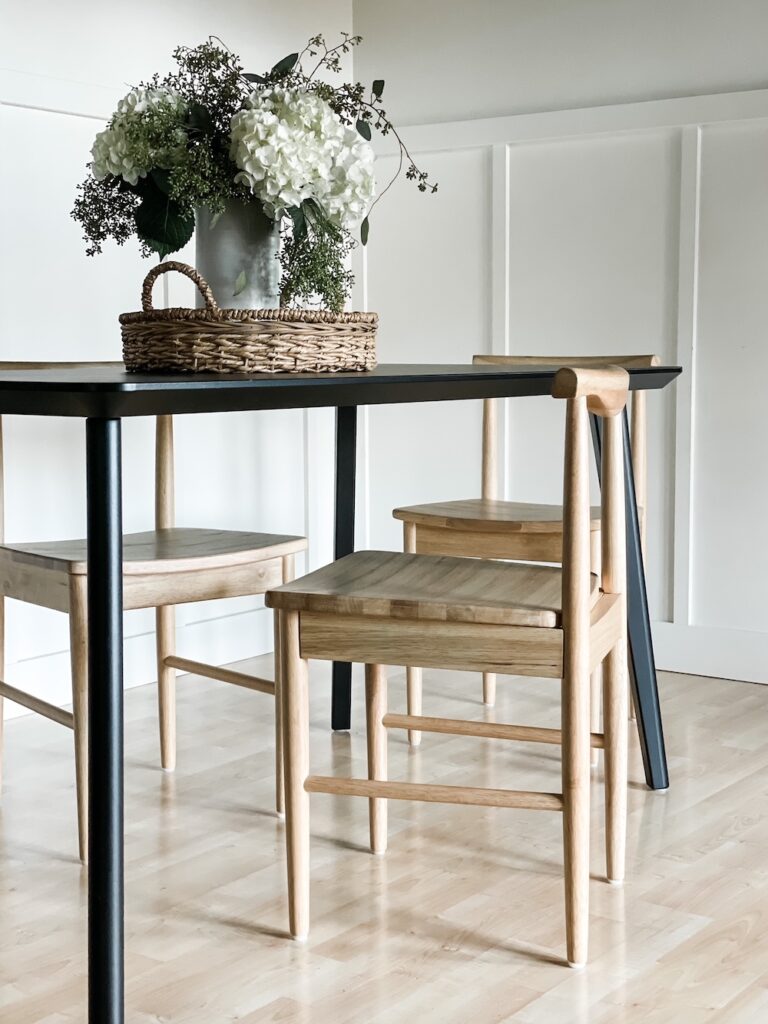Home Design Terms Explained
When it comes to home styling, I have a pretty casual approach. Not to mean I don’t take the elements seriously, but I’m far from pretentious or rigid. Labels can be kind of intimidating actually and feel like a barrier to learning anything. That said, knowing some key terms can be helpful! Over the years as I’ve worked on many homes and interacted with contractors or ordered pieces, knowing the vocabulary has given me a lot of confidence. Here, I’m breaking down some common home design terms to to help you create authentic, lovely spaces.

Focal Point
This is pretty much what it sounds like, it’s the main focus of a space. Often, this is something like a fireplace, artwork, or a statement piece of furniture that draws the eye and anchors the space (see this one explained below). It serves as the centerpiece around which the rest of the room’s design is arranged. Not only does this make a space interesting, but it’s a good place to start when you’re faced with decorating a space.
Texture
We get it, texture is all the rage. Textured pillows, blankets, baskets everywhere. So what’s the big deal? Well texture is the surface quality of a material, which can be how it feels or visual (how it looks). Adding texture adds depth and richness to a room, preventing it from feeling flat or one-dimensional.
Usually more medical or sterile places lack texture and feel really flat. Texture can be introduced through fabrics, finishes, and natural elements like wood or stone.
Read More: 7 Ways to Add Texture to Home Decor
Color Palette
A color palette is just the mix of colors you use in a room to set the vibe. Warm tones make things feel cozy and inviting, while cool tones keep it chill and calming. When your colors work together, the whole space feels balanced and harmonious—like it was meant to be!
Check Out: My Curated Paint Color Schemes to make painting easy
Minimalism
A design style characterized by simplicity and the use of minimal elements, focusing on clean lines, open spaces, and a limited color palette. The goal is to create a clutter-free environment that emphasizes function and form. Minimalism often involves thoughtful curation, with each piece serving a specific purpose or making a strong visual statement.
Read More: The Basics of Minimal Home Decor
Proportion
This is one of my favorite home design terms – at least the concept of it. Proportion is all about how the sizes of different elements in a space work together. When the proportions are right, everything feels balanced and harmonious. Using the rule of thirds or the golden ratio to nail the perfect proportions in a room’s layout and decor.

Contrast
Contrast is about using opposites—like light and dark colors, rough and smooth textures, or big and small shapes—to make a space more visually interesting. It highlights differences and makes certain features pop, adding depth and dimension to the design.
By balancing these contrasting elements, designers create spaces that feel dynamic, engaging, and full of character.
Read More: How to Add Contrast at Home
Balance
Speaking of balance, this is all about making a room feel just right—not too heavy on one side or the other. It can be symmetrical, like a mirror image on both sides, or asymmetrical, where things don’t match exactly but still feel even. When the balance is spot on, the whole space feels stable, comfy, and easy on the eyes.
Harmony
Harmony is all about making everything in a room work together so it feels unified and put-together. When colors, textures, and styles flow seamlessly, the space just clicks. It’s the secret to creating a room that feels cohesive and calm instead of chaotic or mismatched.
Layering
The process of adding depth and interest to a room by combining multiple elements, such as textures, patterns, and colors. Layering can involve using different fabrics on furniture, layering rugs, or adding various types of lighting. This technique helps create a rich, inviting space with a sense of complexity and warmth.
Read More: How to Layer Throw Pillows Like a Pro
Statement Piece
A bold, eye-catching item in a room that draws attention and sets the tone for the entire space. This could be a piece of artwork, a striking piece of furniture, or an unusual light fixture. A statement piece often becomes the focal point of a room, around which the rest of the decor is styled.
Cohesion
Cohesion is a home design term used all the time – maybe too much! But in any case, it’s all about making sure everything in a room works together effortlessly. When the colors, furniture, accessories, and layout are all in sync, it creates a unified look that feels intentional and well-put-together. It’s what makes a space feel like it just flows!
Transition
Transition is all about how one space flows into the next, making everything feel connected and seamless. For example, if your living room opens into the dining room, adding touches of natural wood—like a wood-framed mirror in one room and a wood dining table in the next—can create a sense of continuity. It’s an easy way to tie the spaces together and make them feel cohesive.
Visual Weight
The perceived heaviness or lightness of an object or area in a room based on its size, color, shape, or texture. Visual weight influences how balanced a room feels, with heavier items grounding a space and lighter items adding a sense of openness. Designers often play with visual weight to create interest and prevent a room from feeling too heavy or too sparse.
Accent Wall
An accent wall is a great way to add depth and make a space more interesting. Whether it’s painted a bold color, covered in wallpaper, or finished with a unique texture, it draws attention and creates contrast. It’s often used to highlight an architectural feature or to define specific areas within an open-concept layout, making the room feel more dynamic and intentional.
Read More: How to Choose an Accent Wall
Ambient Lighting
Ambient lighting is like the foundation of a well-lit room—it’s the main source of light that sets the overall tone and makes the space feel cozy and welcoming. Think ceiling fixtures, chandeliers, or recessed lights that brighten up the whole area evenly. Pair it with accent or task lighting to add depth and create the perfect vibe!
Read More: Warm vs Cool Lighting
Open Concept
Ok, this is a home design term you probably hear all the time. But sometimes, we can overlook what it actually means. An open floor plan combines spaces like the kitchen and living room into one large, open area without walls. It creates a spacious feel, improves flow, and makes it easier for people to connect. While open concepts are great for enhancing natural light and creating a social vibe, they can also be a little tricky to decorate.
Hygge
If you spend any time on Instagram, you might be wondering what is hygge? Well, it’s a Danish concept that emphasizes coziness, comfort, and contentment – a key element of Scandinavian design. It often includes warm lighting, soft textures, and inviting decor, creating a sense of well-being and relaxation. Hygge is about creating a welcoming atmosphere that encourages people to slow down and enjoy the simple pleasures of life.

Vignette
A small, curated display of decorative objects, often arranged on a table, shelf, or mantel. Vignettes are used to add personality and interest to a space, showcasing items like artwork, books, plants, and other decor pieces. They are typically designed with a focal point and follow principles of balance and proportion.
Final Thoughts on Design Terms
At the end of the day, decorating a home is all about making it feel like you. Knowing a few key home design terms can help, but it’s not about following rules—it’s about experimenting, having fun, and creating a space that feels inviting and comfortable. Want to learn more? Check out Houzz’s Design Dictionary A-Z.
Whether you’re setting up a focal point, layering textures, or playing with contrast, it’s all about finding what works and feels right for your home. Hopefully, these tips make the process a little less intimidating and a lot more enjoyable. To check out more specifics, check out my posts on Home Design Questions Answered.




